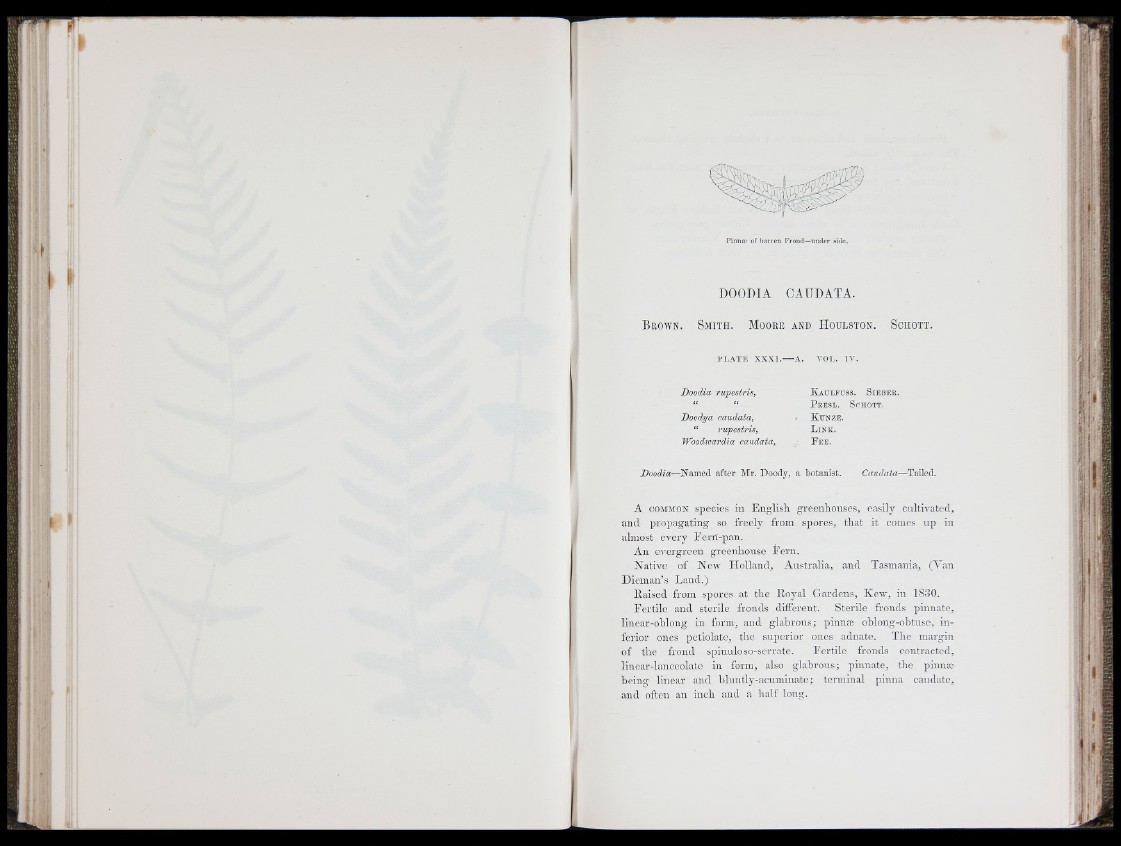
Pinnæ of b an c n Frond—under side.
DOODIA CAUDATA.
B r o w n . S m i t h . M o o r e a n d H o ü e s t o n . S c h o t t .
P L A T E X X X I .— A . V O L . IV .
Doodia rupestris,
Doodya caudata,
“ rupestris,
TVoodwardia caudata,
K a u l f u s s . S i e b e h .
P e e s l . S c h o t t .
K u n z e .
L i n k .
F e e .
Doodia—Named after Mr. Doody, a botanist. Caudata—Tailed.
A COMMON species iu E n g lish greenhouses, easily cultivated,
and propagating so freely from spores, th a t it comes u p in
almost every E ern-pan.
A n evergreen greenhouse F e rn .
Na tiv e of New H o llan d , Australia, and Tasmania, (A'an
Dieman’s L and.)
Raised from spores at th e Royal Gardens, Kew, in 1830.
F e rtile and sterile fronds different. Sterile fronds p innate,
linoar-oblong in form, and glabrous; pinnæ oblong-ohtusc, in ferior
ones petiolate, the supe rior ones adnate. The margin
of th e frond spinuloso-serratc. F e rtile fronds contracted,
linear-lanceolate in form, also glabrous; pinnate, the pinnæ
being linear and bluntly-acumiiiate ; terminal pinna caudate,
and often an inch and a h a lf long.